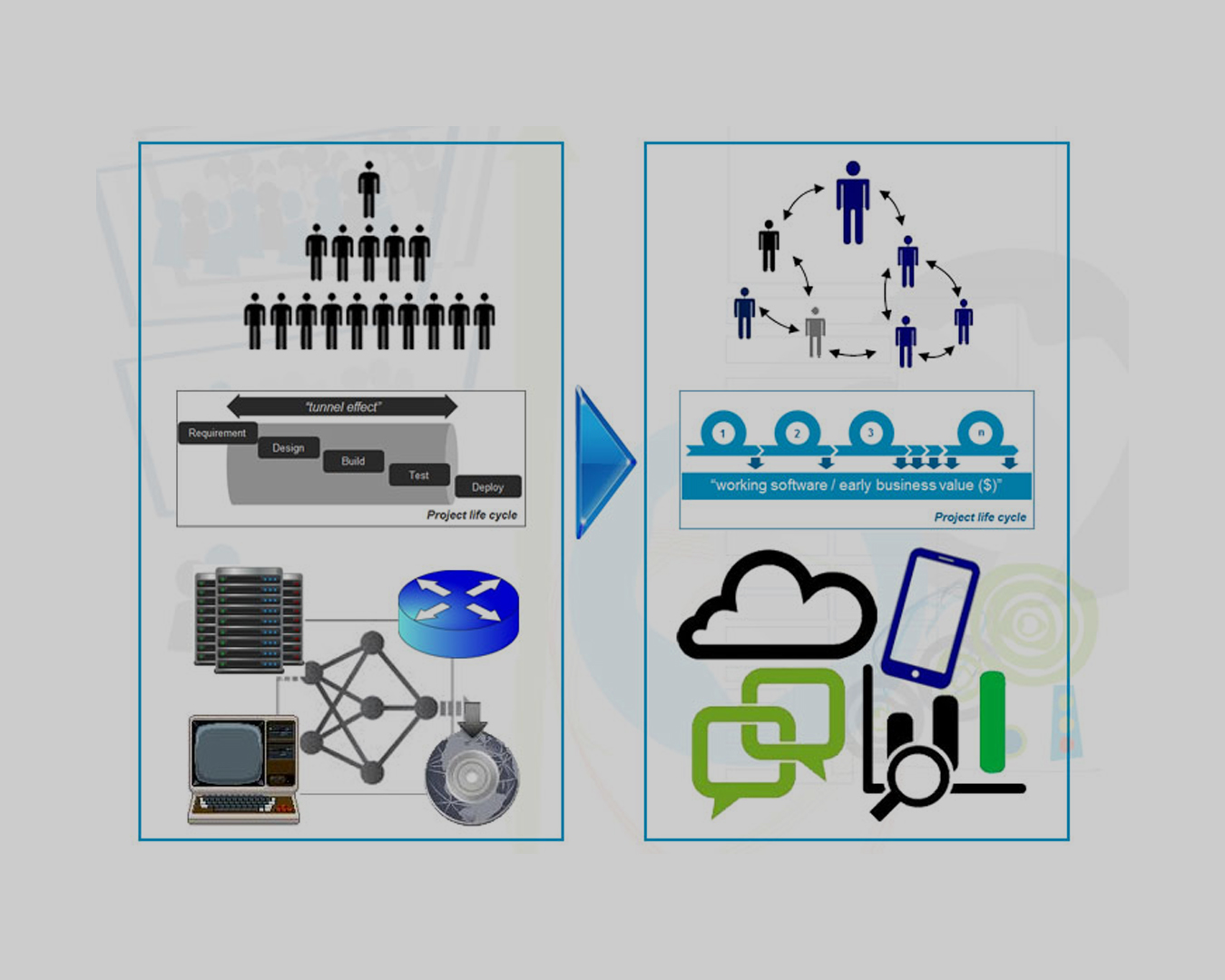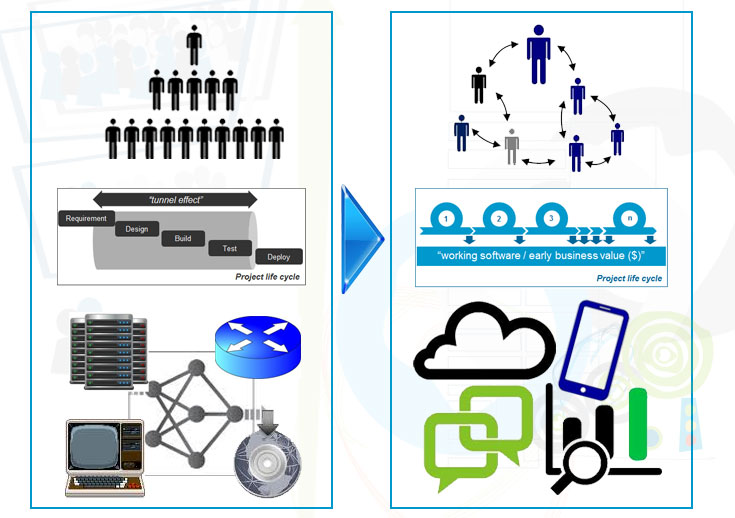Enterprise agility is about making your organization nimble and fast in responding to the opportunities offered by the marketplace. Essentially, it is about how you change your organization by making the different enterprise functions work together to deliver faster or support the business better. Enterprise agility is also about achieving quantified business outcome faster which in turn makes you ahead of your competition by building internal efficiencies and improving the top line of an organization.
In the current business landscape, where innovation is very critical to any business growth and sustainability and the lifecycle of products are much shorter. An efficient mechanism is required to deliver results faster than your competition, and that has to be a commercial organization’s approach to growth. An agile organization results from the right combination of mindset, leadership direction, organization processes, people skills, technology, operations and department dynamics in the organization. Usually there can be two approaches of incorporating agility in an enterprise – Top-Down and Bottom-Up. A top-down approach allows the leadership or the senior management of the organization to drive the change (here being the movement towards agility) and a bottom-up approach encourages the middle management to change their way of work.
The Case for IT agility
Enterprise agility, unarguably, is the need of the hour. You have to make sure that you are able to anticipate the competition better. If the internal working of your organization is not aligned towards delivering changes faster, you will be left behind. Hence, IT agility becomes a necessity. Gone are the days when IT was a mere support function. IT is paramount in managing the business of any industry, capturing information, automating processes, analyzing information and arriving at informed decisions. Enterprise agility has a lot to do with making your IT more agile and how we do that is a critical question. There are specific agile principles and practices which you can introduce. You look at the context of your current way of IT delivery, whether it is IT initiated system integration or even managing ‘business as usual’, using your infrastructure, platforms and applications. There is a direct co-relation between agile IT within an organization and that enterprise’s overall ability to be agile.
How do you foster IT Agility
An organization needs to usher in change from 3 angles: Technology, processes and people.
Technology: The first aspect covers how fast and responsive your technology is to any change, or how easy it is to incorporate any new feature that gives you an edge over your competition and helps you succeed.
Processes: These play a very important part. The way you outline your processes is a paradigm shift from the old ways to help achieve the project results faster. With the traditional approach, it has been observed that the higher the duration of the project, the higher is the chances of it not meeting the expectations or objectives. So Enterprise agility introduces the process of incremental and frequent delivery and hence greater business value to business. It will always be more effective than the traditional way.
People: You can predict processes and technology but you cannot predict people – making it the most unpredictable aspect of being agile and achieving agility in an organization. How can you bring a change in the mindset of people working in the organization? How can you connect people to the goals and objectives of an organization? How can you make them work in a more effective and collaborative manner? How can you actually structure the organization and have roles and responsibilities clearly delineated so that everybody is aligned to the same goal? This requires investment in coaching, mentoring, re-skilling as well as de-skilling. People have to unlearn things and at the same time acquire new things to be agile. Greater challenges toward being agile lie within the ‘people’. You may set your processes right, have the best products or tools available at your disposal and yet without addressing the people change, you will be unsuccessful in achieving enterprise agility.
The biggest roadblock is – People fear change. If you are able to build their confidence and provide room for failure, then there is a possibility that the change is welcomed by your people. They would like to know what’s in it for them. The ‘change agent’ chosen to do such work should be chosen very carefully. He/she should be able to address these concerns to drive the change. The change agent should be someone who is influential, possesses the necessary credentials, understands the context of the change he/she has to bring about and has the required authority to execute it.
Introducing enterprise agility to your organization should be done in a very practical way, rather than blindly following what others do. Keep in mind that how others are doing it may not work for you. Make sure that agility is linked to business outcome and it is not just an internal concept in itself. It should consciously accommodate the challenges in the people mindset and demonstrate the successes in shorter cycles. Do it incrementally with a long term road map and a sustainable process and clearly defined outcome. Cut down your goals into shorter milestones, show impact and move forward. “Show and tell” has to be your mantra in this journey.





